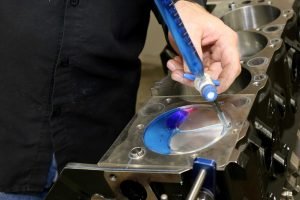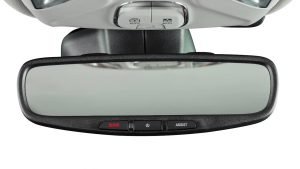Contents
- In the world of car enthusiasts, two of the most popular engines are the Toyota 1UZ and the 2JZ. Both engines have a cult following and are often used in high-performance builds. In this article, we’ll compare the two engines in terms of power, reliability, aftermarket support, and more. So, whether you’re looking to build a street machine or a race car, read on to learn which engine is the better choice for your project.
- Overview
- Power and Performance
- Reliability
- Aftermarket Support
- Conclusion
- FAQs
In the world of car enthusiasts, two of the most popular engines are the Toyota 1UZ and the 2JZ. Both engines have a cult following and are often used in high-performance builds. In this article, we’ll compare the two engines in terms of power, reliability, aftermarket support, and more. So, whether you’re looking to build a street machine or a race car, read on to learn which engine is the better choice for your project.
Overview
The 1UZ Engine
The Toyota 1UZ is a V8 engine that was produced from 1989 to 2006. It was first introduced in the Lexus LS 400 and was later used in other Toyota and Lexus models. The engine has a displacement of 4.0L (3,968cc) and features DOHC, 32 valves, and an aluminum block and heads. The 1UZ produces between 250 and 290 horsepower (depending on the year and model) and 260-320 lb-ft of torque.
The 2JZ Engine
The Toyota 2JZ is a six-cylinder engine that was produced from 1991 to 2002. It was first introduced in the Toyota Aristo (known as the Lexus GS in the US) and was later used in the Toyota Supra and other models. The engine has a displacement of 3.0L (2,997cc) and features DOHC, 24 valves, and an iron block with aluminum heads. The 2JZ produces between 280 and 320 horsepower (depending on the year and model) and 260-315 lb-ft of torque.
Power and Performance
Horsepower and Torque
The 2JZ is known for its high horsepower potential. With the right modifications, it’s possible to make well over 1,000 horsepower on the stock bottom end. However, the 1UZ is no slouch either. While it may not have the same level of aftermarket support as the 2JZ, it’s still possible to make impressive power figures. The 1UZ has been known to make 600+ horsepower with the right modifications.
Boosted vs. Naturally Aspirated
Both engines can be turbocharged or supercharged, but the 2JZ is more commonly used in boosted applications. The 2JZ’s iron block and stronger internals make it more capable of handling high levels of boost. The 1UZ, on the other hand, is more commonly used in naturally aspirated builds. While it can still handle boost, it may require more upgrades to the internals to handle high boost levels.
RPM Range
The 2JZ has a higher rev limit than the 1UZ, making it better suited for high-performance applications. The 2JZ can rev up to 7,000 RPM, while the 1UZ typically maxes out around 6,000 RPM. This means that the 2JZ can produce power higher in the RPM range, which is useful for racing applications.
Reliability
Known Issues
The 2JZ has a few known issues, such as weak piston rings and a tendency to crack cylinder heads when overheated. However, these issues are relatively easy to address with aftermarket upgrades. The 1UZ, on the other hand, is known for its reliability. It’s a well-built engine that can last for hundreds of thousands of miles with proper maintenance.
Maintenance
Both engines require regular maintenance to stay reliable. However, the 1UZ is generally easier and cheaper to maintain than the 2JZ. Parts for the 1UZ are more readily available and often less expensive than parts for the 2JZ. Additionally, the 1UZ is less complex than the 2JZ, which means there are fewer things that can go wrong.
Aftermarket Support
Parts Availability
The 2JZ has a larger aftermarket than the 1UZ, which means there are more parts available for it. However, the 1UZ still has a decent aftermarket, and many parts are interchangeable between the two engines (such as camshafts, valve springs, and other valvetrain components).
Cost
Due to its popularity and larger aftermarket, parts for the 2JZ are often more expensive than parts for the 1UZ. However, with the right research and shopping around, it’s still possible to build a high-performance 2JZ without breaking the bank.
Tuning
Both engines are capable of making impressive power figures with the right tuning. However, the 2JZ has a larger tuning community and more tuning options than the 1UZ. This means that it may be easier to find a reputable tuner and get a good tune for a 2JZ build.
Conclusion
So, which engine is better, the 1UZ or the 2JZ? Well, it depends on your goals and budget. If you’re looking for a reliable engine that can last for hundreds of thousands of miles with minimal maintenance, the 1UZ is a great choice. However, if you’re looking for an engine that’s capable of making massive amounts of power and has a large aftermarket, the 2JZ is the way to go.
Ultimately, both engines are great choices for high-performance builds, and it’s up to you to decide which one is the better choice for your specific project.
FAQs
- Is the 1UZ a good engine for drifting?
- While the 1UZ isn’t as commonly used in drifting as the 2JZ, it’s still a capable engine and can be used in a drift build.
- Can the 2JZ handle high levels of boost?
- Yes, with the right upgrades, the 2JZ can handle well over 1,000 horsepower on the stock bottom end.
- Are parts for the 1UZ expensive?
- Parts for the 1UZ are generally less expensive than parts for the 2JZ, but prices can vary depending on the specific part and brand.
- Which engine is better for a street build?
- Both engines can be great choices for a street build, but the 1UZ may be better suited for a daily driver due to its reliability and ease of maintenance.
- Can the 1UZ be turbocharged?
- Yes, the 1UZ can be turbocharged or supercharged with the right upgrades.
Affiliate Disclosure: As an Amazon Associate, I earn from qualifying purchases made through links on this site.








